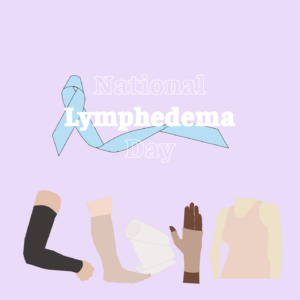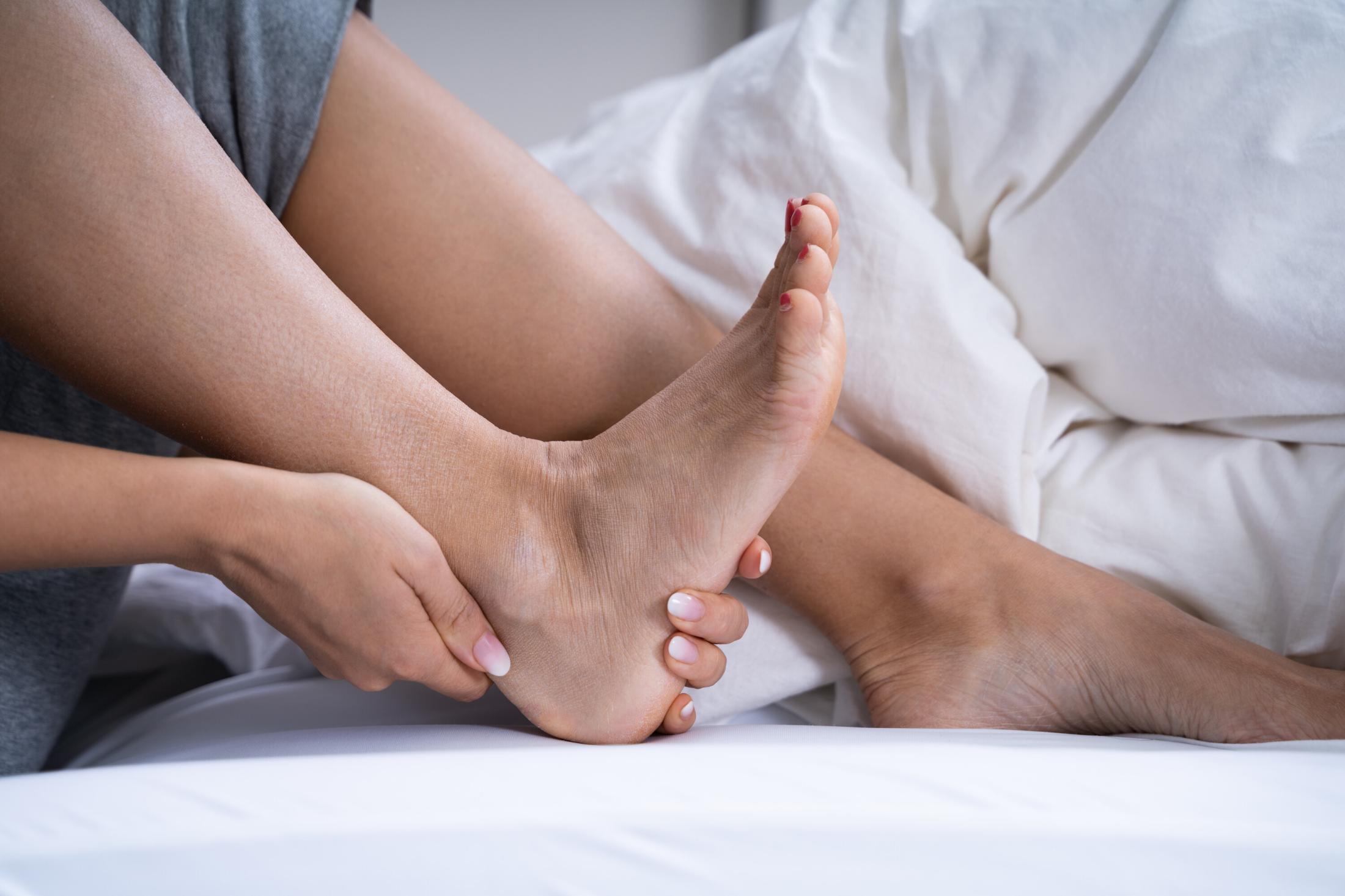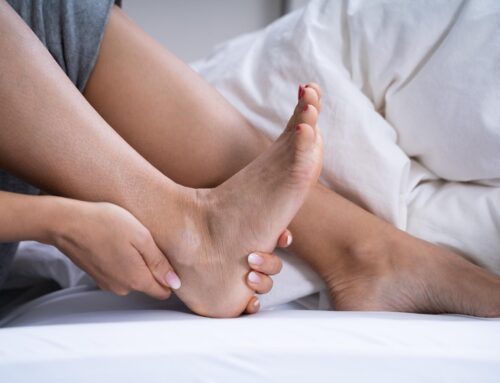Effective management and treatment for lymphedema are crucial for several reasons. Lymphedema is a chronic condition characterized by the accumulation of lymphatic fluid in the body’s tissues, leading to swelling, discomfort, and a range of other symptoms. It typically affects the arms or legs but can occur in other parts of the body. The condition arises due to a malfunction or damage to the lymphatic system, often as a result of surgery, radiation therapy, infection, or inherited conditions.
Firstly, managing lymphedema helps alleviate physical symptoms such as swelling and discomfort, improving the patient’s quality of life. Secondly, proper management can prevent the progression of the condition and reduce the risk of complications, such as infections or skin changes. Lastly, through a combination of therapies, self-care measures, and professional guidance, individuals can take control of their condition, maintain their mobility, and continue their daily activities with confidence.
By staying informed and proactive, patients can effectively manage their symptoms and lead a more comfortable and fulfilling life.
Lymphedema: Causes, and Types
Lymphedema is a medical condition that occurs when the lymphatic system, responsible for draining excess fluids from tissues and maintaining immune function, becomes compromised. This impairment leads to an abnormal accumulation of lymph fluid, resulting in swelling, most commonly in the arms or legs. Various factors can trigger lymphedema, including:
- Surgery: Removal of lymph nodes during cancer treatment can disrupt normal lymph flow.
- Radiation Therapy: Can damage lymphatic vessels, leading to blockages.
- Infection: Severe infections can cause scarring in lymphatic vessels, impeding lymph flow.
- Injury: Trauma to the lymphatic system can disrupt its functioning.
- Hereditary Conditions: Some individuals are born with a faulty lymphatic system, leading to primary lymphedema.
Types: Primary and Secondary Lymphedema
Lymphedema is categorized into two main types, each with distinct origins:
- Primary Lymphedema: This type is less common and usually results from a congenital anomaly in the lymphatic system. It can manifest at birth, during puberty, or in adulthood, often without any apparent cause.
- Secondary Lymphedema: This form is more prevalent and arises as a consequence of damage to the lymphatic system. Common causes include surgery, radiation therapy for cancer, infection, or trauma that affects the lymphatic vessels or nodes.
Effective Treatment for Lymphedema
Proper management strategies of lymphedema is essential to alleviate symptoms, prevent progression, and enhance the quality of life.
Compression Therapy
Compression therapy is a cornerstone in lymphedema management. It involves wearing specially designed garments to exert gentle pressure on the affected area, promoting lymph fluid movement and reducing swelling.
- Types of Compression Garments: These include sleeves, stockings, gloves, and bandages, tailored to fit different body parts. The choice of garment depends on the severity and location of lymphedema.
- Benefits: Compression garments help maintain the reduction in swelling achieved through other treatments, improve circulation, and prevent fluid accumulation.
- Proper Usage: It’s crucial to wear compression garments as prescribed, usually during the day and sometimes at night. They should be replaced regularly to maintain their effectiveness and should fit well to avoid constriction or discomfort.
Manual Lymphatic Drainage (MLD)
Manual Lymphatic Drainage is a specialized form of massage that encourages the natural drainage of lymph fluid.
- What is MLD?: It involves gentle, rhythmic movements by a trained therapist to stimulate the lymphatic system, helping to redirect lymph fluid away from swollen areas.
- How MLD Helps in Lymphedema Management: MLD can reduce swelling, alleviate pain, and improve mobility. It’s often used in conjunction with compression therapy for optimal results.
Exercise and Physical Activity
Regular exercise is vital for lymphedema patients, as it enhances lymphatic function and overall well-being.
- Recommended Exercises: Low-impact activities like walking, swimming, and gentle yoga are beneficial. Resistance exercises, under the guidance of a healthcare professional, can also be helpful.
- Precautions and Guidelines: Start slowly and gradually increase intensity. Wear compression garments during exercise, and avoid activities that could strain or injure the affected limb. It’s essential to consult with a healthcare provider before starting any new exercise regimen.
Self-Care Tips for Lymphedema Patients
Treatment for lymphedema involves more than just medical treatments; self-care plays a pivotal role in controlling symptoms and maintaining overall well-being. Below are some essential self-care tips for lymphedema patients:
Skincare and Hygiene
- Moisturize Regularly: Keep your skin well-hydrated to prevent cracking and infections. Use a fragrance-free, hypoallergenic moisturizer.
- Clean Gently: Bathe or shower daily with mild soap, and gently pat the skin dry, paying special attention to the affected area.
- Protect Your Skin: Avoid cuts, scratches, and insect bites. Wear gloves while gardening and use insect repellent.
- Nail Care: Keep your nails clean and trimmed to prevent infection.
- Promptly Treat Wounds: Clean any cuts or abrasions immediately and apply an antibiotic ointment.
Diet and Nutrition
- Stay Hydrated: Drink plenty of water to help your body maintain proper fluid balance.
- Maintain a Healthy Weight: Excess weight can exacerbate lymphedema symptoms. Follow a balanced diet to manage your weight effectively.
- Reduce Salt Intake: Limiting salt can help prevent fluid retention.
- Eat Anti-Inflammatory Foods: Incorporate foods rich in antioxidants and anti-inflammatory properties, such as fruits, vegetables, and omega-3 fatty acids.
Stress Management and Relaxation Techniques
- Practice Relaxation Techniques: Engage in activities like yoga, meditation, or deep breathing exercises to reduce stress and promote lymphatic flow.
- Get Adequate Sleep: Aim for 7-9 hours of quality sleep each night to support your body’s healing processes.
- Seek Support: Join a lymphedema support group or connect with others who understand your condition. Sharing experiences and tips can be therapeutic and informative.
Support for Lymphedema Patients
Diagnosis and personalized treatment plans are crucial components in the management of lymphedema. Healthcare professionals play a key role in accurately diagnosing the condition, distinguishing it from other causes of swelling through a comprehensive medical history, physical examination, and sometimes imaging tests. Once a diagnosis is confirmed, medical professionals work closely with patients to develop personalized treatment plans. These plans are tailored to each individual’s unique needs, taking into account the severity of their condition, lifestyle, and overall health.
The journey doesn’t end with the initial treatment plan. Regular follow-ups are essential for monitoring progress and making necessary adjustments. This may include reassessing the fit of compression garments, modifying exercise routines, or updating self-care practices. As lymphedema can evolve over time, treatment strategies may need to be adapted to ensure they remain effective and responsive to the patient’s changing needs.
Management and Treatment for Lymphedema
Lymphedema is a chronic condition that requires diligent management to alleviate symptoms and prevent progression.
- Compression Therapy: Utilizing compression garments to reduce swelling and improve lymphatic flow.
- Manual Lymphatic Drainage (MLD): Engaging in specialized massage techniques to enhance lymphatic circulation.
- Exercise and Physical Activity: Incorporating low-impact exercises to maintain mobility and support lymphatic function.
- Self-Care: Prioritizing skincare, nutrition, and stress management to support overall well-being.
It’s crucial for patients to work closely with healthcare providers to develop and maintain personalized treatment plans. Regular monitoring and adjustments ensure that management strategies remain effective and responsive to the individual’s needs.
Living with lymphedema can be challenging, but with the right approach, it is possible to manage the condition effectively and lead a fulfilling life.
Share This Story, Choose Your Platform!
Table of Contents
We specialize in orthotics, body braces, and compression wear tailored to your unique needs in Toronto. Reach out to us at info@caremed.care or call 416-782-5353 to book your fitting and consultation.
Experience the difference of customized solutions designed just for you.












